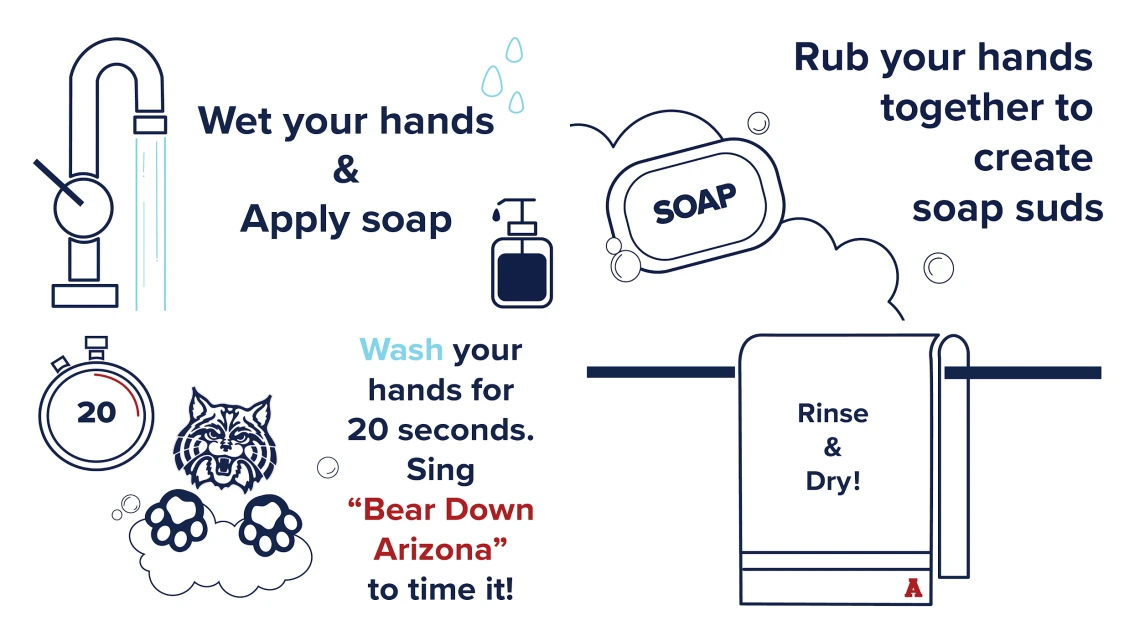Bringing My Creativity Into COVID-19

Sophie Baygents
Snapshot from "How to Wash Your Hands" instructional video.
I was contacted by the Mel and Enid Zuckerman College of Public Health to help The University of Arizona’s response to the COVID-19 pandemic. I was immediately intrigued by the opportunity, knowing I’d be able to further my design skills during a national slump. With more time on my hands & everything canceling, why not participate?
But quickly, it became more than a simple design internship. After collaborating on multiple projects with Emily Waldron, Community Engagement and Outreach Coordinator with MEZCOPH, and my peers, I realized I was helping instill guidelines and information that would not only keep students and faculty safe, but turn the tides of the pandemic. I recently completed three design projects: Reopening Guidelines for the University of Arizona, How to Wash your Hands instructional video, and a Student Guide for Flying during the COVID-19 pandemic. To me, these three projects have one common theme: establishing behavioral change.
As a college student, I know how complacent, indolent, impatient, yet diligent we can be. College students form routines between class, homework, work, and/or sports and the Coronavirus up-heaves this comfortability. Considering this, my goal is to provide information through simple imagery that will help new and returning students establish new routines: wearing a mask every day, using hand sanitizer, washing your hands frequently, social distancing, disinfecting your items & surfaces, and most importantly, monitoring your health. For example, in my instructional video, I recorded myself in my bedroom, talking to the camera. I introduced myself as a Design student in the College of Fine Arts so I could connect on the same level as my audience, other college students. I wanted this video to be made for students by a student, to increase its acceptability among university students.
Even though our age group (18-25 years old) is less impacted by the Coronavirus, we must practice these steps to protect others who are more at risk, from ourselves.

